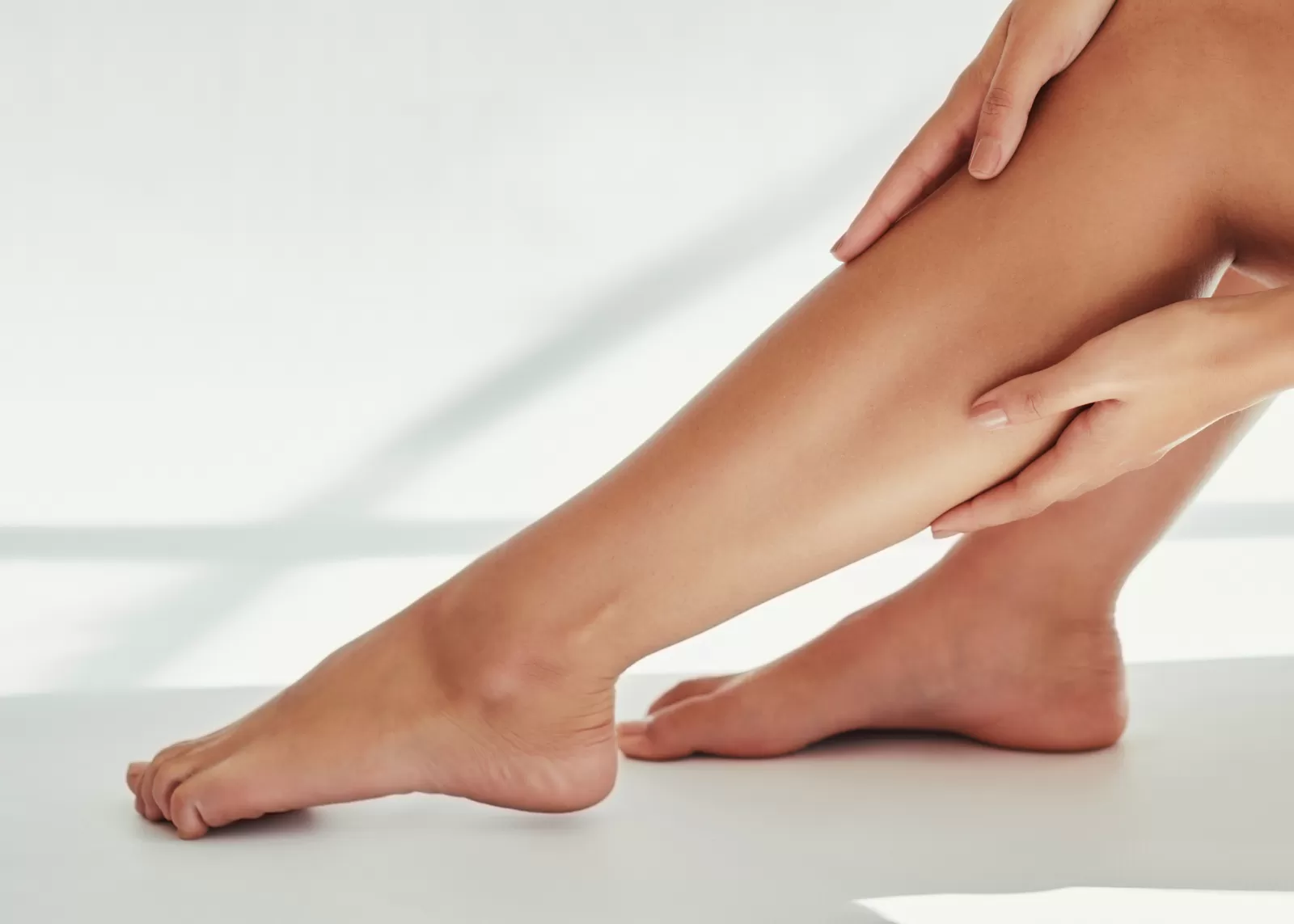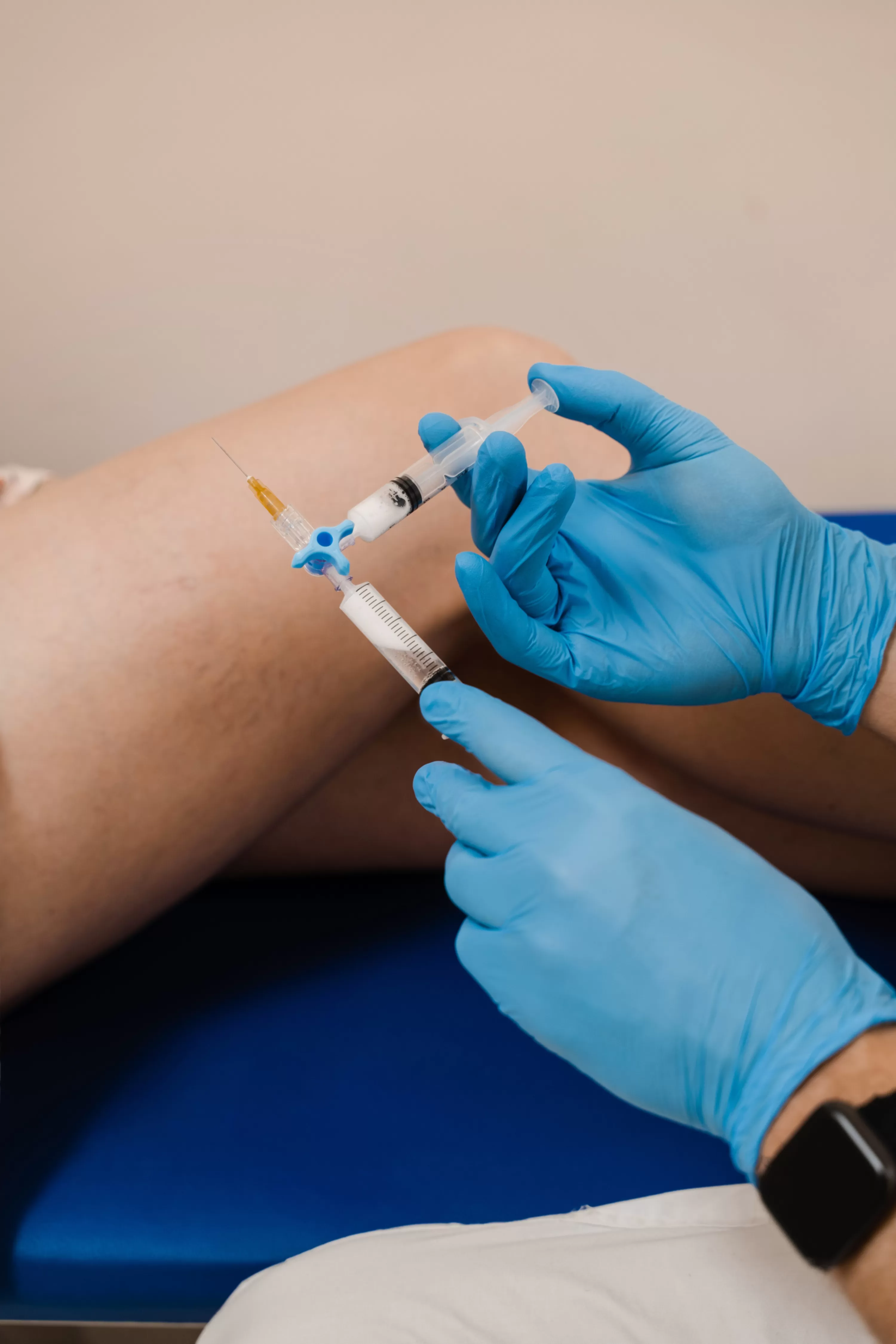Micro-Sclerotherapy & Ultrasound Guided Sclerotherapy
Micro-Sclerotherapy & Ultrasound Guided Sclerotherapy
Micro-Sclerotherapy & Ultrasound Guided Sclerotherapy
Treatment
Overview
Overview
Ultrasound Guided Foam Sclerotherapy & micro-sclerotherapy are minimally invasive procedures for treating small varicose veins and spider veins. Sclerotherapy is considered the gold standard treatment for these types of veins due to its safety record and efficacy. It focuses on closing damaged superficial veins by injecting them with a medication called sclerosant. Here at The R Clinic whilst most sclerotherapy treatments are done using ultrasound imagery (i.e. US guided sclerotherapy), some are performed under direct vision or with assistance from vein visualization technology e.g., AccuVein.
Sclerotherapy can be a treatment on its own for spider veins and small varicose veins or can be used in conjunction with other procedures when required.
How it works
How it works
Sclerotherapy is the process of injecting a sclerosant solution into a vein. This special medication irritates the lining of the vein walls causing them to slough away and be absorbed naturally by the body. The vein collapses down and over the next few months the vein becomes a thread of scar tissue (sclerosis) and cannot be seen. As the body heals, blood is then re-routed to healthier veins improving your overall circulation. The sclerosant may be injected as liquid or foamed with CO2 depending on the location and types of veins needed to be treated. There are two commonly used sclerosants, Sodium Tetradecyl Sulfate & Aethosxysclerol, both medications are approved by the TGA for the treatment of varicose vein.
Why we use Micro and Ultrasound guided Sclerotherapy?
Why we use Micro and Ultrasound guided Sclerotherapy?
- Effective treatment for smaller vein – as a complement to endovenous thermal ablation, sclerotherapy is especially useful for recurrent varicose veins and veins that are too small to treat with endovenous catheter. Sclerotherapy is every effective treatment when performed on suitable veins 2.5mm-4mm in diameter.
- Minimal downtime – sclerotherapy is a highly tolerated procedure and requires no interruption to your daily activities. Most patients can return to work the next day.
- Simple outpatient procedure with no general or local anaesthetic required. Generally, take less than 30mins for a treatment
- Success rate of 75-90% (when used independently)
- Ultrasound guided injection allows for more accurate and effective treatment of the varicose vein hidden under the skin that is not visible to naked eye
Expected Results
Expected Results
Following the procedure, it is normal to expect some mild discomfort, mild swelling and bruising. Your skin may be tender to touch, gentle walking and wearing prescribed compression stocking will help manage and lessen the discomfort. Your legs may ache for a few days, and any trapped blood will need to be removed.
Varicose veins will generally disappear over 6-12 weeks. The spider vein will not disappear completely but should improve by about 60-80% or more depending on the number of treatments. If you want more resolution, then more treatments will be necessary. Optimal results can generally be seen around the 3-month mark.
- Treatment Time – 30 Minutes (approx)
- Discomfort – Mild
- Recovery – No downtime
- Compression – 7 to 14 Day
Preparation & Aftercare
Preparation
Preparation
- Prior to your treatment, you will first see our sonographer who will carefully mark out the areas to be treated using ultrasound, and you will also see our nurse who will take measurement of your legs to determine the size of your medical grade compression stocking
- Avoid taking iron supplement or blood thinner two weeks before your treatment
- Shower and remove any hair on the operative leg from ankle to around 3 finger widths into pubic hair the night before
- Bring your prescribed thigh high compression stocking to be put on after the procedure. If we order one for you, it will be here ready to be given to wear afterwards
During procedure
During procedure
- Topical numbing cream is often applied to minimise discomfort during injection
- The sclerosant is mixed with air through a special filter, which creates a fine foam making the solution more effective
- An ultrasound is used to visualize the problem veins and guide the needle into the vein, so the injections are done very accurately
- Each injection delivers around 0.1 to 0.4mL of the sclerosant and is injected at an interval of 2-3cm until the entire vein has been treated
- The duration of treatment is usually less than 30 minutes
Aftercare
Aftercare
- Wear compression stocking 24 hours a day for 7 days. This step is extremely important. Your compression stocking will help reduce bruises, swelling, pain and reduce DVT
- Your stocking should be worn to bed. If, however, you experience pain in the foot or heel at night, especially if this pain wakes you up, you MUST remove the stocking while laying down in bed and put it back on again in the morning BEFORE you get up
- Work – you can return to work as soon as you feel able to do so
- You should walk a minimum of 30 minutes each day for 2 weeks after treatment
- Avoid prolonged standing or sitting. If sitting, place the legs up and elevate them where possible.
- Avoid intense physical activities and any heavy lifting for the first 4 days.

Results
FAQ
Have further questions or want to learn more?
How many treatments will I need?
This will be very dependent on the nature of the vein problem and desired “end point” of treatment, i.e. medical vs cosmetic motivation.
Many sclerotherapy providers recommend 3 treatments on average (range 1-6 treatments).
The sclerotic process takes time so you must be patient and allow your body to fully heal between each stage. The body can take up to 10mL of the sclerosant solution in a single sitting. What we can achieve with this 10mL depends on how many veins you have requiring treatment; therefore, multiple sessions may be required.
Is it painful?
No different to a simple needle injection, although many injections are required. If you are highly needle phobic, please mention this to our friendly team to discuss your options.
What happens after sclerotherapy treatment?
After your treatment, your vein care provider may ask you to keep lying down for 15 minutes or so to make sure you don’t have a bad reaction to the injected material.
You’ll be able to drive yourself home. You may go back to your regular activities, especially walking. You should wear support hosiery or compression wraps for three to seven days to compress the treated vessels.
For 48 hours after your procedure, follow these guidelines:
- Avoid aspirin, ibuprofen and other anti-inflammatory medications. You may take acetaminophen if you need it for pain relief.
- Don’t take hot baths or sit in a whirlpool or sauna. You may take showers, but the water should be cooler than usual.
- Wash the injection sites with mild soap and lukewarm water.
- Don’t apply hot compresses or any form of heat to the treated areas.
- Avoid direct exposure to sunlight (including sun tanning and tanning beds).
What veins can be treated with foam sclerotherapy?
Foam sclerotherapy is a minimally invasive treatment that is relatively inexpensive and can be an effective stand-alone treatment if the abnormal varicose veins if they are small. Most commonly however it is a secondary treatment used in addition to endovenous thermal ablation or phlebectomy. It works well for veins less than 4mm in diameter and poorly for veins greater than 8mm in diameter, with variable results for veins 4-8mm in size. If foam sclerotherapy is performed on veins that are too large it is likely that it will not be effective long term, and the veins will reopen and become painful, lumpy, stain, and require re-treatment in the future.
What’s the Recovery Time?
We are happy to let you know this is a walk-in, walk-out procedure. Therefore, right after the treatment, we will apply some protective stockings and you can instantly walk. Most patients can go straight back to work or any other daily activity. We recommend avoiding strenuous exercises for the first two weeks after treatment.
What are the sides effects of sclerotherapy?
- Larger injected veins may get lumpy or hard for several months.
- The redness where the needle went in should go away within a few days.
- Brown lines or spots on your skin at the site of the injection usually go away within three to six months. However, about 5% of the time, they can be permanent.
- Bruising where the injection happened can last several days or weeks.
- Tiny blood vessels may develop in the treated area. They may appear days or weeks after your sclerotherapy but should fade within a few months. Usually, they don’t need further treatment.
- Allergic reactions to the injected chemical may happen at the time of the injection and are rarely serious. Symptoms include itching and swelling.
What are the “red flag” symptoms I should look out for?
If you have any of these rare side effects, contact your vein care provider immediately:
- Inflammation (swelling) within five inches of your groin.
- Sudden swelling in your leg.
- Formation of small ulcers at an injection site.
- Red streaking, especially in your groin area.
Is laser treatment or thermal ablation better than sclerotherapy?
Laser treatment, or endovenous thermal ablation, is another good alternative to ligation and stripping of varicose veins. It’s generally safe but can have some side effects like you do with sclerotherapy. However, it’s difficult to do ablation on a varicose vein that has a lot of twists and turns. Your vein care provider will need to consider what your veins look like when deciding on the best treatment for you.
